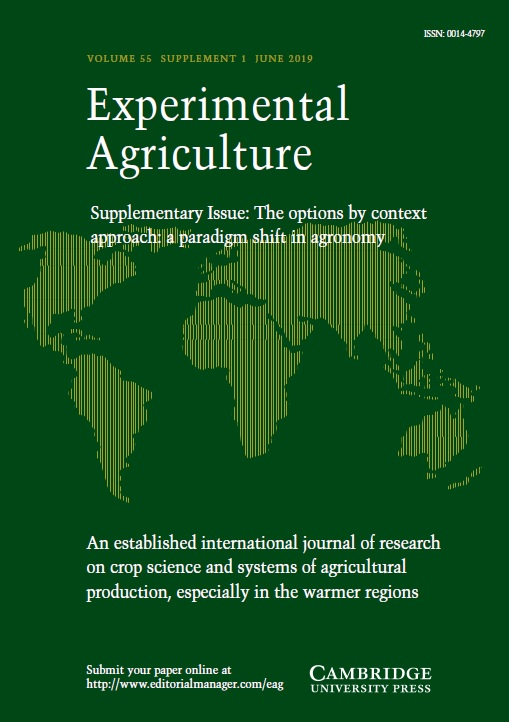No CrossRef data available.
Article contents
Estimating productivity and nutritive value of Marandu palisadegrass using a proximal canopy reflectance sensor
Published online by Cambridge University Press: 28 July 2022
Abstract
In intensive livestock production systems, estimating forage production and its nutritive value can assist farmers in optimizing pasture management, stocking rate, and feed supplementation to animals. In this study, we aimed to use vegetation indices, determined using a proximal canopy reflectance sensor, to estimate the forage mass, crude protein content, and nitrogen in live forage of Marandu palisadegrass (Urochloa brizantha). Pasture canopy reflectance was measured at three wavelengths (670, 720, and 760 nm) using a Crop Circle device equipped with an ACS-430 sensor. Total forage mass, plant-part composition, leaf area index (LAI), and crude protein content were assessed during 14 growth cycles in a pasture under four management regimes, comprising different combinations of two N fertilization rates and two irrigation schedules. For each forage assessment, pasture canopy reflectance data were used to calculate the following vegetation indices: normalized difference vegetation index, normalized difference red edge, simple ratio index (SRI), modified simple ratio, and chlorophyll index. In addition, we also performed analyses of the linear and exponential regressions between vegetation indices and total forage mass, leaf + stem mass, leaf mass, LAI, crude protein content, and nitrogen in live forage. The best estimates were achieved for total forage mass, leaf + stem mass, leaf mass, and nitrogen in live forage using SRI (R2 values between 0.72 and 0.79). When estimating pasture productive variables (total forage mass, leaf + stem mass, leaf mass, and LAI) from SRI, the equations showed R2 values between 0.69 (leaf mass) and 0.74 (LAI) and relative errors ranging from 19% to 21%. For each of the water and nitrogen supply conditions evaluated, this index facilitated the monitoring of forage mass time series and nitrogen in live forage and the extraction of this nutrient by the pasture.
Information
- Type
- Research Article
- Information
- Copyright
- © The Author(s), 2022. Published by Cambridge University Press


